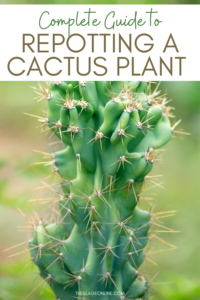In recent years, there has been a burgeoning interest in hallucinogenic plants and the potential they hold, both for cultural practices and for modern psychedelic therapy. Among these botanical entities, one of the most intriguing is peyote, a small cactus indigenous to parts of Mexico and southwestern United States. This article serves to dissect the legal intricacies surrounding peyote, provide insights into its cultural significance, and unravel the implications of its use in contemporary society.
Understanding the complexities of peyote’s legality requires a deep dive into its historical context, current statutes, and the evolving conversation around psychedelic substances.
Exploring Peyote’s Rich Heritage
Peyote, scientifically known as Lophophora williamsii, is revered not only for its psychoactive properties but also for its entrenched status in Indigenous cultural practices. For thousands of years, Native American tribes have utilized this cactus in religious ceremonies, believing it grants profound spiritual insights. The ritualistic use of peyote facilitates a communion with the divine, acting as a conduit for healing and personal revelation.
In the late 19th and early 20th centuries, the burgeoning interest inpsychedelic substances rekindled curiosity surrounding peyote. Unfortunately, this fascination led to a backlash, resulting in its criminalization in various jurisdictions. Nevertheless, the establishment of the American Indian Religious Freedom Act in 1978 sought to rectify these historical injustices by allowing recognized Native American tribes to use peyote as part of their religious ceremonies.
Parsing the Legal Landscape of Peyote
At the heart of peyote’s legal status lies a tangled web of federal, state, and tribal regulations that can often mislead the unacquainted.
At the federal level, peyote is classified as a Schedule I controlled substance under the Controlled Substances Act. This designation implies that the substance has a high potential for abuse, lacks accepted medical use, and poses significant risks of dependency. However, the law has carved out exceptions for Native Americans who use peyote specifically within the context of religious rites. This limited exemption does not extend to non-Native individuals, complicating the conversation around legal use even further.
Different states across the U.S. exhibit varied regulatory frameworks concerning peyote. Some states continue to uphold stringent penalties for possession and use, while others have taken more lenient stances—evidence of a broader cultural shift towards reevaluating psychedelic substances. It’s pertinent for individuals interested in the legal status of peyote in their respective areas to understand local regulations, as these can either foster or inhibit its accessibility.
Crucially, the undefined boundary between ceremonial and recreational use triggers significant discourse. The distinction is vital; while Indigenous individuals may legally partake in peyote rituals, similar use by non-Indigenous populations remains fraught with legal peril. This raises essential questions around cultural appropriation and the ethical implications of utilizing traditional practices for personal gratification.
Contemporary Discussions Surrounding Psychedelics
As the conversation around psychedelics begins to shift in modern society, using peyote outside of its traditional context invites scrutiny. The increasing acceptance and advocacy for the therapeutic potential of psychedelics pose intriguing questions regarding peyote’s role in this emerging paradigm. Recent research has illuminated the possible mental health benefits afforded by psychedelics, sparking revived interest in their use as adjuncts in therapeutic settings.
While the therapeutic efficacy of peyote specifically remains under-explored, studies on other psychedelics have prompted calls for broader regulatory reform. Advocates argue that the potential benefits should not be mired in historical prejudice but rather embraced in a modern context that recognizes their value in mental wellness. This evolving discourse indirectly influences the perception and legality of peyote, nudging it into a more favorable light as society grapples with the legacies of past legislation.
Furthermore, discussions around decriminalization and potential legalization of psychedelics have proliferated across several states, suggesting a prophetic shift in societal attitudes. Various cities and states are paving the path for more lenient laws governing these substances, which could eventually encompass peyote and broaden its accessibility.
The Future of Peyote’s Legal Standing
The legal future of peyote remains layered with uncertainties, yet change seems inevitable. As a growing cohort of advocates pushes for reevaluation of existing laws, the stigma attached to peyote usage—and psychedelics in general—may fray. The simultaneous preservation of Indigenous cultural practices alongside increased research and access could lead to more harmonious coexistence in the legal realm.
It is essential to fully comprehend the multifaceted character of peyote, acknowledging its historical significance and the sociocultural dialogues surrounding its use. Thus, delving into the realm of peyote invites individuals not merely to engage with a cactus but to examine the wider implications of its legality, the cultural ramifications, and the important distinctions that define its use in society.
In conclusion, the question of whether peyote is legal ultimately hinges on numerous factors, including geography, context, and the evolving nature of societal attitudes towards psychedelics. As discussions continue to unfold, it remains paramount to navigate these complexities with respect, awareness, and a commitment to understanding the diverse narratives surrounding the plant. Whether you are seeking spiritual enlightenment, mental wellness, or cultural insight, the story of peyote is rich and multifaceted, deserving of thoughtful exploration and dialogue.





Leave a Comment